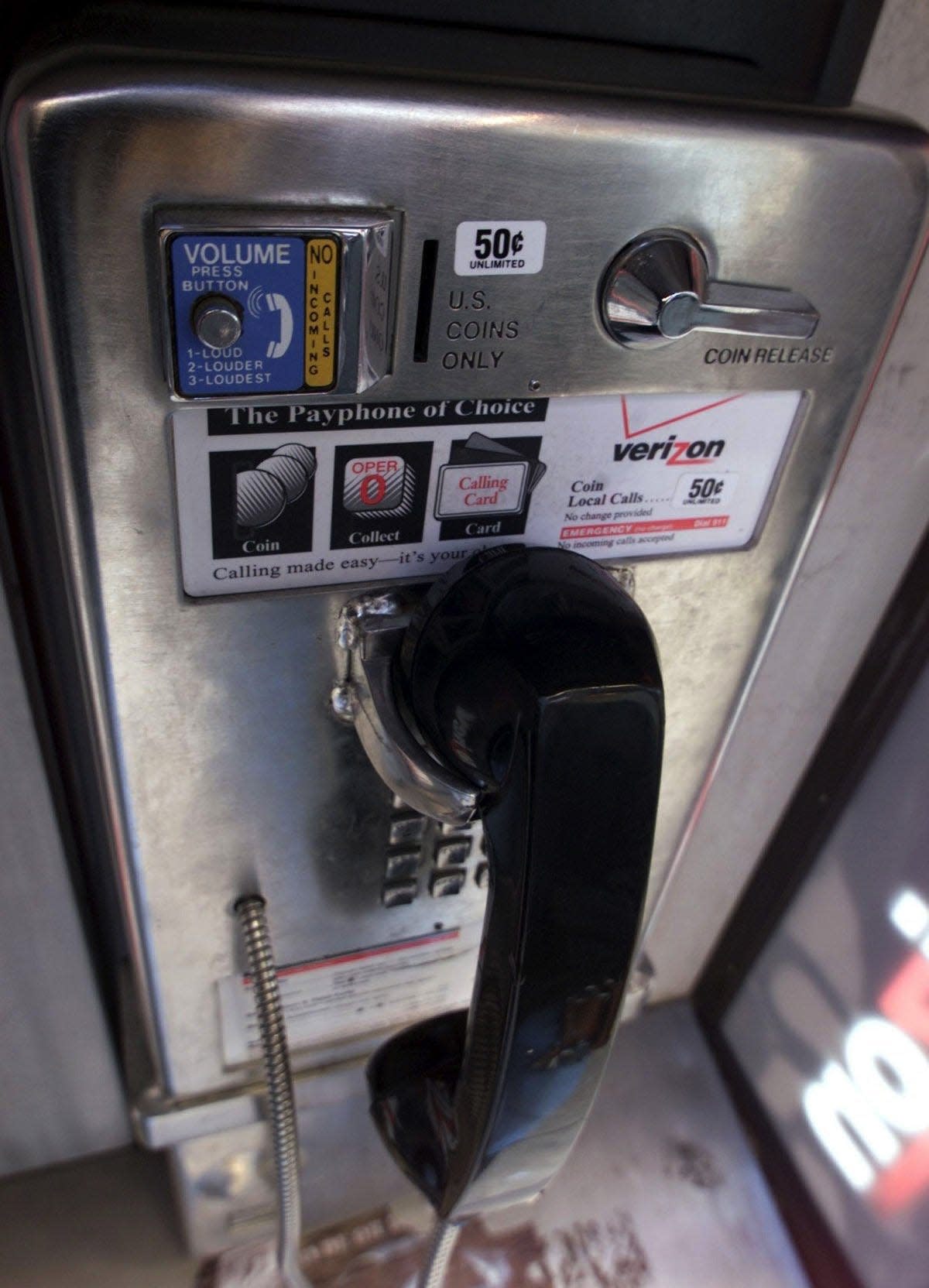Just Askin': How many pay phones are left in Ohio?

The Enquirer's Just Askin' series aims to answer the questions that no one seems to have an answer for, not even Google.
Cities had them on almost every street corner. They were in nice restaurants. If it was raining, you'd be grateful they were under a canopy or inside a booth.
And God forbid you forget your dimes or quarters.
Those were the days of pay phones. Having public phones in 2024 might be about as useful as a newspaper vending machine or an encyclopedia. In other words, you can make a call or find an article on something else: It's called a smartphone.
There was once a thriving public and private pay phone industry. Many people made their livelihoods from running and maintaining phone booths or wall hookups in private establishments.
If you ask Ronald Jacobs, former secretary of the now-dissolved Payphone Association of Ohio, he'd tell you times have changed. Jacobs still owns a private pay phone business and manages phones in Northeast Ohio. Now most of his pay phones are located in halfway houses and similar places.
"One by one, we just took them out," Jacobs said. "The only thing I’m down to is those indoor phones in those types of facilities, where they still want to have pay phones there because they don’t want some of the residents to have cellphones."
Gone are the days of phone booths on the sidewalk and most coin-operated telephones. Federal Communications Commission data will tell you the same thing.
How many pay phones are left in Ohio and the rest of the U.S.?
The FCC tracked data nationwide from 1997 through 2016 after the passage of the federal Telecommunications Act of 1996. By 2016, the number of pay phones would be only 5% of what it was 19 years prior.
In 1997, there were about 2 million LEC-owned and independently-owned pay phones in the U.S. That increased to 2.1 million by 1999.
A decade later in 2006, there were 1 million. In 2009, there were just over 555,000 pay phones in the U.S. By the end of the data period in 2016, there were 99,832.
Ohio reflects that nationwide trend, though data doesn't go back that far. An FCC spokesperson said the data that allowed the commission to track pay phones by state didn’t start until 2008, so information is only available from that year until 2016.
There were 2,540 pay phones remaining in Ohio in 2016. That's about 13% of what we had just eight years before.
2008: 19,335.
2009: 13,954.
2010: 10,044.
2011: 7,808.
2012: 5,869.
2013: 4,909.
2014: 4,194.
2015: 3,078.
2016: 2,540.
Why did pay phones disappear? Cellphones weren't the only reason
The cellphone's emergence in the 1990s is a cause of the pay phone's decline, but that's not the only reason.
The Payphone Association of Ohio was a nonprofit that was founded in 1997 and dissolved in 2020. Its purpose was to lobby and advocate for independent pay phone businesses.
Jacobs got into the pay phone business in 1992, operating phones primarily in the Cleveland and Akron areas. One big blow to the local industry, he said, was when Cleveland banned pay phones in city limits, with advocating councilmembers at the time saying they contributed to drug-related crime.
"Not only the ordinance in Cleveland did them in, finally what really put the cap on the pay phone business was cellphones," Jacobs said.
Gradually through the 2000s pay phone companies started weeding out the phones that were no longer profitable. Now, most pay phones are found in prisons and other places where residents cannot have phones.
Up-to-date data is no longer available on pay phones but Jacobs estimates there would be less than 1,000.
Do you have a question for Just Askin'? Send it to us at cinlocalnews@enquirer.com.
This article originally appeared on Cincinnati Enquirer: Phone booths, public coin-operated phones are part of the past in Ohio
